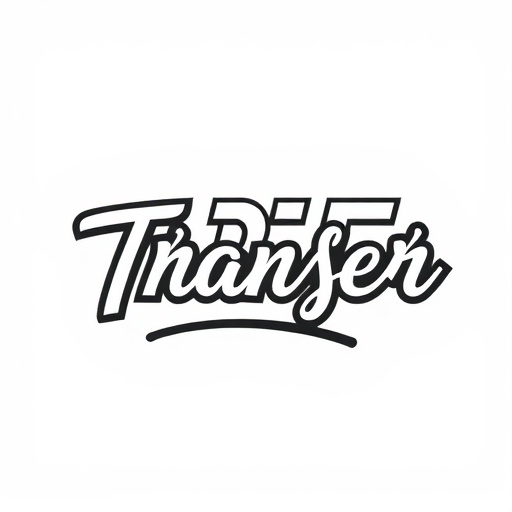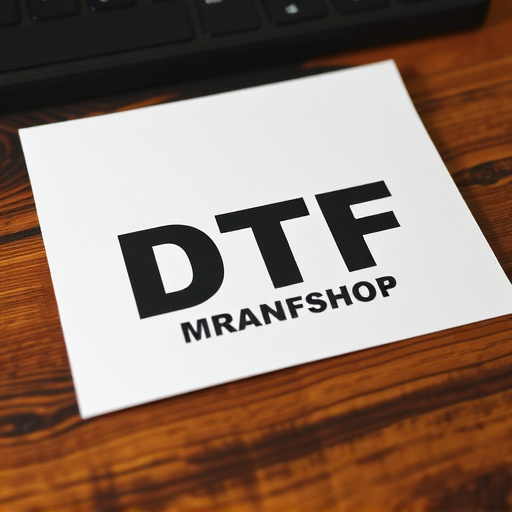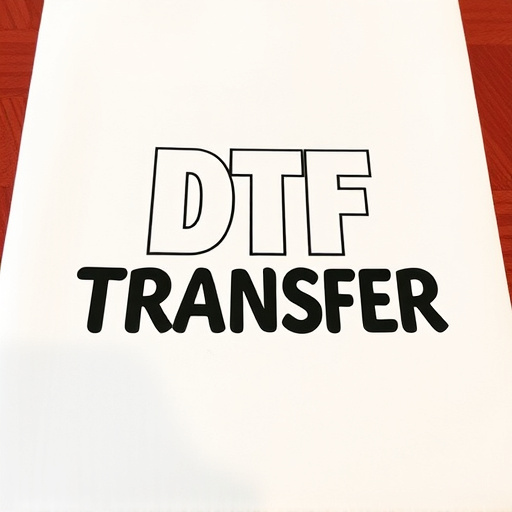Direct-to-film (DTF) transfer technology has revolutionized printing with its precision color reproduction and exceptional detail. The process involves mapping high-quality images onto thin film, curing it with UV light for durability, and allowing for multiple washes without quality loss. DTF's popularity stems from producing high-quality, long-lasting transfers suitable for diverse applications like fashion and signage. Key factors ensuring successful DTF prints include advanced printing machines, inks, transfer films, and careful application techniques. To maintain print quality after washing, use high-quality films, pre-treat surfaces, follow washing instructions, and regularly inspect prints. DTF transfers are widely adopted in the fashion industry for custom designs and also excel in promotional merchandise due to their durability.
Direct-to-film (DTF) transfer technology has revolutionized printing, offering exceptional quality and versatility. This article explores the durability of DTF prints, delving into the science behind their longevity through multiple washes. We’ll dissect the key components of a high-quality DTF process, address common challenges, and provide best practices for preservation after washing. Discover real-world applications where DTF transfers excel, highlighting their promise in enhancing various products’ aesthetics and durability.
- Understanding Direct-to-Film (DTF) Transfer Technology
- The Quality Promise: DTF Prints and Durability
- Key Components of a High-Quality DTF Printing Process
- Common Challenges in DTF Printing and Their Solutions
- Best Practices for Maintaining DTF Print Quality After Washing
- Real-World Applications: Where DTF Transfers Shine
Understanding Direct-to-Film (DTF) Transfer Technology

Direct-to-film (DTF) transfer technology has revolutionized the way we create and reproduce prints. Unlike traditional printing methods, DTF involves transferring ink directly onto a film surface using specialized equipment. This innovative approach ensures precise color reproduction and exceptional detail in the final prints. By bypassing intermediate steps, DTF maintains the integrity of the original design, resulting in vibrant and long-lasting DTF prints.
The process begins with high-quality images being precisely mapped onto a thin film layer. This film is then cured using UV light, setting the ink and creating a durable surface suitable for multiple washes without compromising quality. This technology has gained immense popularity, especially among artists and businesses seeking to produce high-quality, long-lasting DTF transfers for various applications, from fashion to signage.
The Quality Promise: DTF Prints and Durability

Direct-to-film (DTF) prints offer an unparalleled promise of quality and durability. This innovative printing technique directly applies ink to film, ensuring superior image clarity and vibrant colors that withstand the test of time. Unlike traditional methods where prints can fade or crack over time, DTF transfers are designed to maintain their integrity through multiple washes, making them a reliable choice for various applications, from clothing and textiles to promotional items.
The durability of DTF prints stems from the robust bonding process between the ink and the substrate material. This advanced technology creates a seamless fusion, preventing ink from peeling or flaking even under rigorous washing conditions. As a result, garments or products adorned with DTF prints retain their original appearance, ensuring that designs remain crisp and vibrant for extended periods, making them stand out in a market saturated with less durable alternatives.
Key Components of a High-Quality DTF Printing Process

The key to achieving high-quality DTF (Direct-to-Film) transfers lies in a meticulous printing process that includes several critical components. First, using top-tier printing machines and inks ensures precise color reproduction and vibrancy on various fabrics. Professional printers invest in state-of-the-art equipment calibrated for optimal results, guaranteeing consistent and accurate DTF prints.
Another essential factor is the choice of suitable film and application techniques. High-performance transfer films with excellent adhesion properties are crucial for long-lasting DTF transfer durability. Skilled technicians apply these films with precision, accounting for factors like heat and pressure to ensure the design seamlessly fuses with the fabric, resulting in vibrant, wash-resistant DTF prints.
Common Challenges in DTF Printing and Their Solutions

Direct-to-film (DTF) printing has gained popularity for its ability to produce high-quality prints on demand. However, this process isn’t without challenges. One common issue is achieving consistent print quality across multiple washes. The solution lies in using specialized inks and coatings designed for DTF transfers, which enhance the durability of the prints. These advanced materials ensure that colors remain vibrant and details sharp even after repeated laundry cycles.
Another challenge is ensuring precise registration during printing. Misalignment can result in uneven or incomplete transfers. To overcome this, modern DTF printers employ sophisticated alignment systems and high-resolution imaging to maintain exact positioning. Additionally, using high-quality substrates suitable for DTF printing guarantees a smooth surface for consistent ink application and better overall results.
Best Practices for Maintaining DTF Print Quality After Washing

To maintain the quality of your direct-to-film (DTF) prints after washing, start by selecting a high-quality DTF transfer film designed for durability and colorfastness. Pre-treating your print surface with a suitable releasing agent ensures the DTF film lifts easily after washing, preventing ink smudging or bleeding. Always follow manufacturer guidelines for washing instructions, using cold water and mild, color-safe detergents to preserve vibrancy and prevent fading.
Avoid aggressive washing techniques like vigorous rubbing or using bleach or fabric softeners, as these can damage the print or cause the inks to run. Air drying is ideal; however, if using a dryer, set it on low heat with no wrinkles or high-heat settings. Regularly inspect your DTF prints for signs of wear and tear, and address any issues promptly to maintain their longevity and visual appeal.
Real-World Applications: Where DTF Transfers Shine

Direct-to-film (DTF) transfers have found their niche in various real-world applications, offering a unique and high-quality printing solution. One of their standout uses is in the fashion industry, where custom T-shirts, hoodies, and accessories are in high demand. DTF allows designers to create intricate, vibrant designs with precise color replication, ensuring each piece is a true work of art. This method is particularly advantageous for small businesses and startups, as it provides an accessible way to offer personalized products without the need for complex equipment or large minimum orders.
Additionally, DTF transfers excel in promotional merchandise, allowing companies to create eye-catching branded items for events, campaigns, or giveaways. Their ability to produce sharp prints on various fabrics makes them suitable for a wide range of products, from tote bags and mugs to phone cases and stickers. Moreover, the durability of DTF prints ensures these items can withstand multiple washes and everyday use, making them practical and long-lasting marketing tools.














